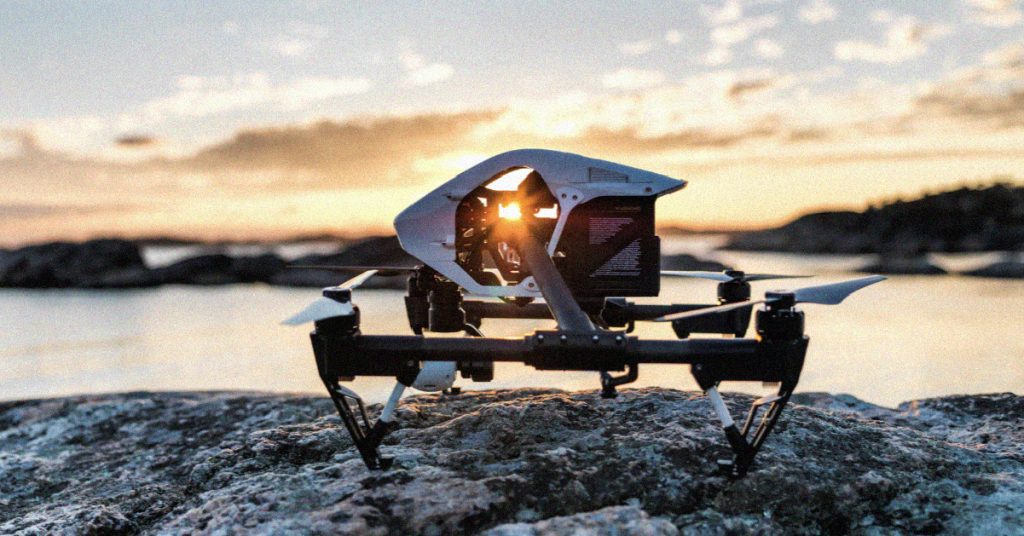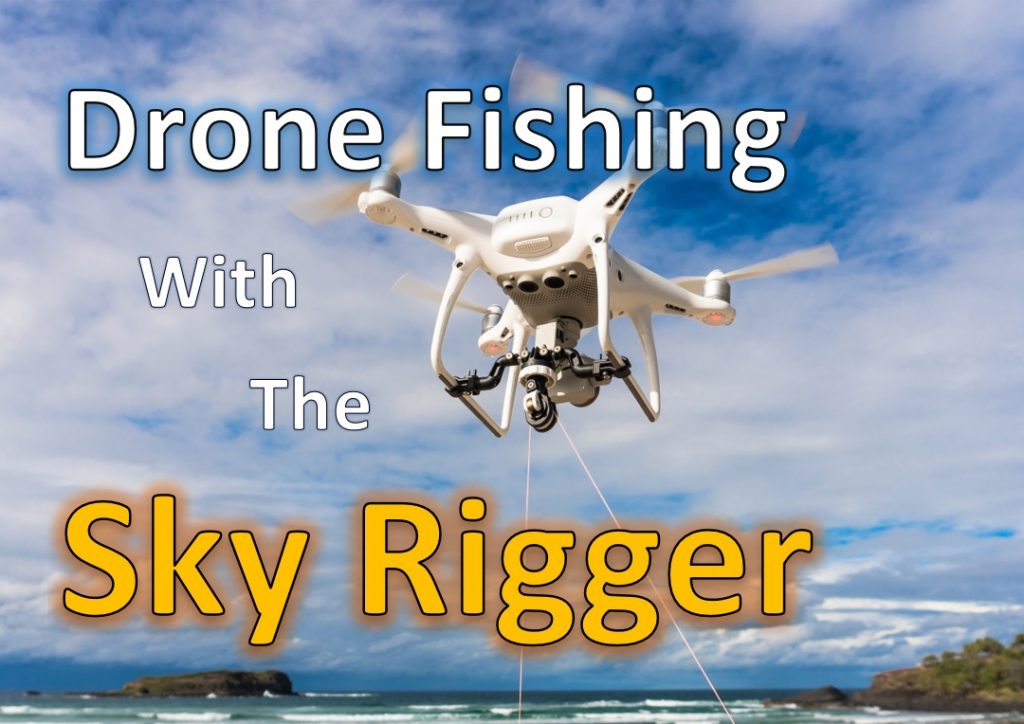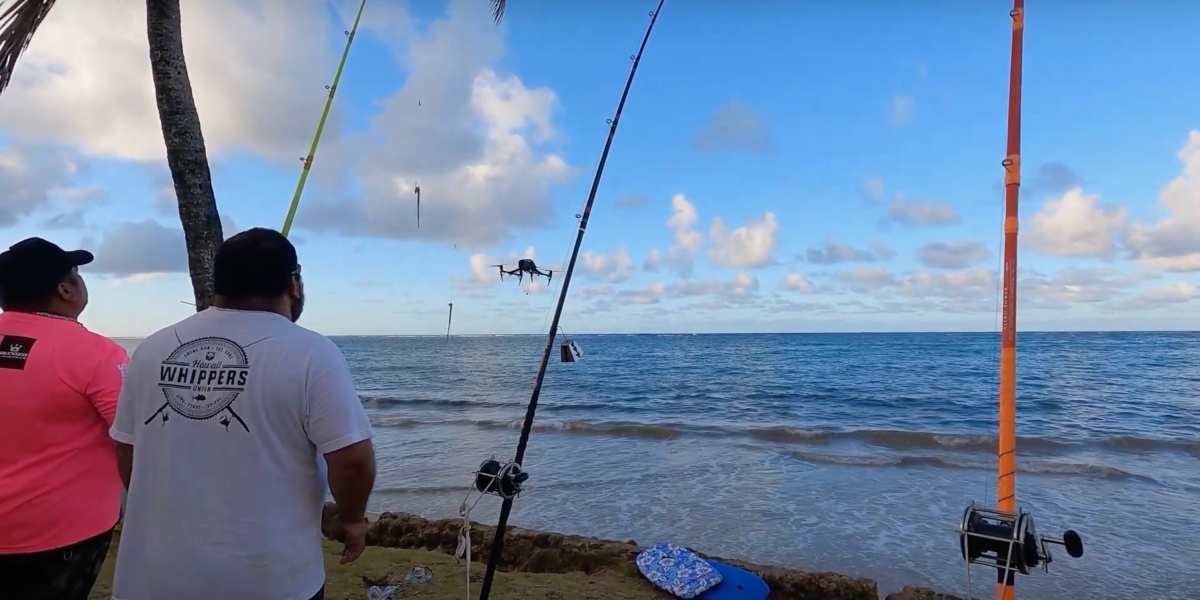
This article will cover the basics of a drone fishing device. We will also discuss what to look out for when selecting your drone, battery life and payload. After that, we'll look at some ways to get the most out of your drone. Read on for some tips and tricks. You will soon have the drone that you dream of! Let's get !... going and maybe even catch a few more fish!
Basic drone fishing rig
To begin drone fishing, you'll need a good selection of hooks. The fishing line should have a doubled length and be either mono or braided. You should tie a Uni knot or Cat's Paw Loop to it. You'll also need a sinker between 2-8 ounces and hooks for attaching to each second section of your backbone. The final step is to attach the lead loop and end loop of your drone using a snap swivel.
There are many ways you can create a fishing drone. An easy way to make a fishing drone is to attach a hook onto the drone's landing gear. Then spin the line until the line is released. Droppers and drop lines can be used to keep the fishing net below the drone. Droppers are a way to keep the main line from getting caught up in propellers. A dock and battery pack can also be added to the fishing drones.
You'll need some additional equipment after you have purchased your basic drone fishing kit. You'll need a fishing line of approximately 700 meters and a bait-dropping tool. These are optional accessories, but they can make your drone fishing adventure more enjoyable. A drone can give you a better view of the surroundings and help you spot fish easier.

Payload for drone fishing rig
You need to know the safety precautions that must be taken if you plan to catch a fish with a drone. It is not a good idea to fly your drone in heavy winds or rain. Here are some suggestions:
First, ensure that the drone has enough weight to support its weight. The drone will not stay stable if it is loaded with heavy lures or braided lines. You should also be aware that the wind can cause the drone's drift if you fish at the coast. It is also important that you check your local laws and regulations, as some may not allow the use of drones for fishing. You need to ensure that your drone is strong enough to carry you when you go fishing.
The next step is to determine which accessories you'll need to mount on your drone. A good rule of thumb is to use a rigging system that has a central attachment point to reduce weight distribution problems. The motor struts and landing gear are the best points for attachment. Avoid attaching any payloads to the camera or gimbal as these could cause damage. You can tie a fishing line running from one end of the camera to the opposite. This can be secured with tape to prevent it from falling out.
Battery life for drone fishing gear
Before going out fishing with your drone, be sure to check the batteries and the other gear. This will keep your drone's battery charged and allow you to fish instead of worrying about charging it. Some drones can be charged with car batteries or solar panels. It is a good idea to start with fully charged batteries. This will ensure your drone is ready to fly when you reach your fishing spot.

The drone's flight time is another important aspect to consider. While some drones can fly longer than others, the average drone can fly for around twenty-two mins. This is great for those who want to spend hours out on the water with their drone. A drone that has limited endurance is likely to be unusable and renders it impossible to catch fish.
After you have setup your fishing rig, attach the fishing line clip to either the legs or the motor struts. Then, attach the bait to the fishing line. Be sure to lock the reel before you fly the drone and unlock it when you're ready to drop the bait. As the drone drops the bait into the water, the tension will increase. If the battery is not charged properly after each use, it will not function properly.
FAQ
What is the law about drones flying on private property?
Recently, the FAA issued new rules regarding commercial drone flight. These rules are only applicable to UAVs that weigh less than 55 pounds and fly below 400 feet above ground. Commercial operators must register with the FAA and obtain a license from the agency. Local authorities must also approve them if they are operating near airports or in other restricted areas.
Is it illegal to fly a drone?
Flying drones is an offense in certain countries, including Australia, Canada, Germany and Japan. It is legal to fly drones in other countries like France.
Can my drone be flown indoors?
Yes, you can fly your drone indoors. There are only a few things you need to do: Make sure your home is free of obstacles and hazards. For example, you should avoid flying near windows, doors, heating vents, air conditioning units, electrical outlets, water pipes, and fireplaces.
Is it safe to drive while flying a drone?
Driving a drone is dangerous, as it could cause an accident or crash into another vehicle. Additionally, you may hit pedestrians or animals. Additionally, hitting power lines, trees or buildings could cause damage to your car.
What laws are there regarding drones flying?
The Federal Aviation Administration (FAA), in the United States, regulates all aspects related to drone operations. First, you need to obtain a FAA certificate in order to operate a drone commercially. Then, you must complete a course in piloting skills and pass an exam. The agency will require you to pay a fee.
Statistics
- With the top 10% making over $100/h and the bottom 10% making as low as $10/h. (dronesgator.com)
- Research and Markets predict a growth rate of 51.1% over the next five years. (thedroneu.com)
- According to industry research from ZipRecruiter , there are 10 cities where the typical salary for a Drone Pilot job is above the national average. (dronesgator.com)
External Links
How To
How to Fly Drones for Beginners
A drone is a remote-controlled aircraft used for aerial photography, cinematography, surveillance, scientific research, and hobby purposes. The technology behind drones has been around since World War II. DJI's Phantom series quadcopters were first commercially available in 2010. Many types of drones have been made available since then, from beginner-friendly models such as the Parrot AR Drone 2.0, to high-end multi-rotor craft such as the DJI Mavic Pro.
There are many options for flying a drone.
-
Remote control: This uses a remote control device that attaches to your hand and allows you control the drone along its flight path. There are two main types of controllers: On/Off switches (like a radio) and joysticks.
-
Manual Control- This allows you to control your drone remotely via GPS coordinates. You will need to keep track of where the drone is going and follow the directions from the app.
-
Autonomous flight - The drone takes over the piloting duties. The drone is able to fly autonomously, without the need for human intervention. A drone must have a builtin camera and sensors capable to capture images and other data.
-
Triggered Flight – This method is very similar to manual flight. The pilot creates a route that the drone will follow until it reaches the destination. After the preprogrammed route is complete, the drone will automatically land and return to its base.
-
Landing Gear - Some drones come equipped with landing gear that allows them to land safely if they lose power or run out of battery during flight.
-
Goggles-Some pilots use goggles to protect their eyes from debris during operations.
-
Camera – Some drones have cameras, which allow you to take photos or videos from up high.
-
Obstacles: Some drones are equipped with obstacle avoidance systems to prevent them from hitting obstacles.
-
Speed - Some drones can travel at speeds over 40 mph.
-
Battery Life: Most drones have a battery life of between 20 and 30 minutes depending on how many power sources you use.
-
Some drones are capable of traveling up to 30 miles depending upon their make and model.
-
Power source: Some drones will require an external power source while others can be powered by internal batteries.
-
Weight - Some drones have a weight of less than 1 pound and others weigh 4 lbs.
-
Size - Drones range from small devices that fit in one's palm to large crafts that weigh more than 50 pounds.
-
Price - From high-end models that cost thousands of dollars to low-cost options that start at $100, all drones fall under a certain price category.